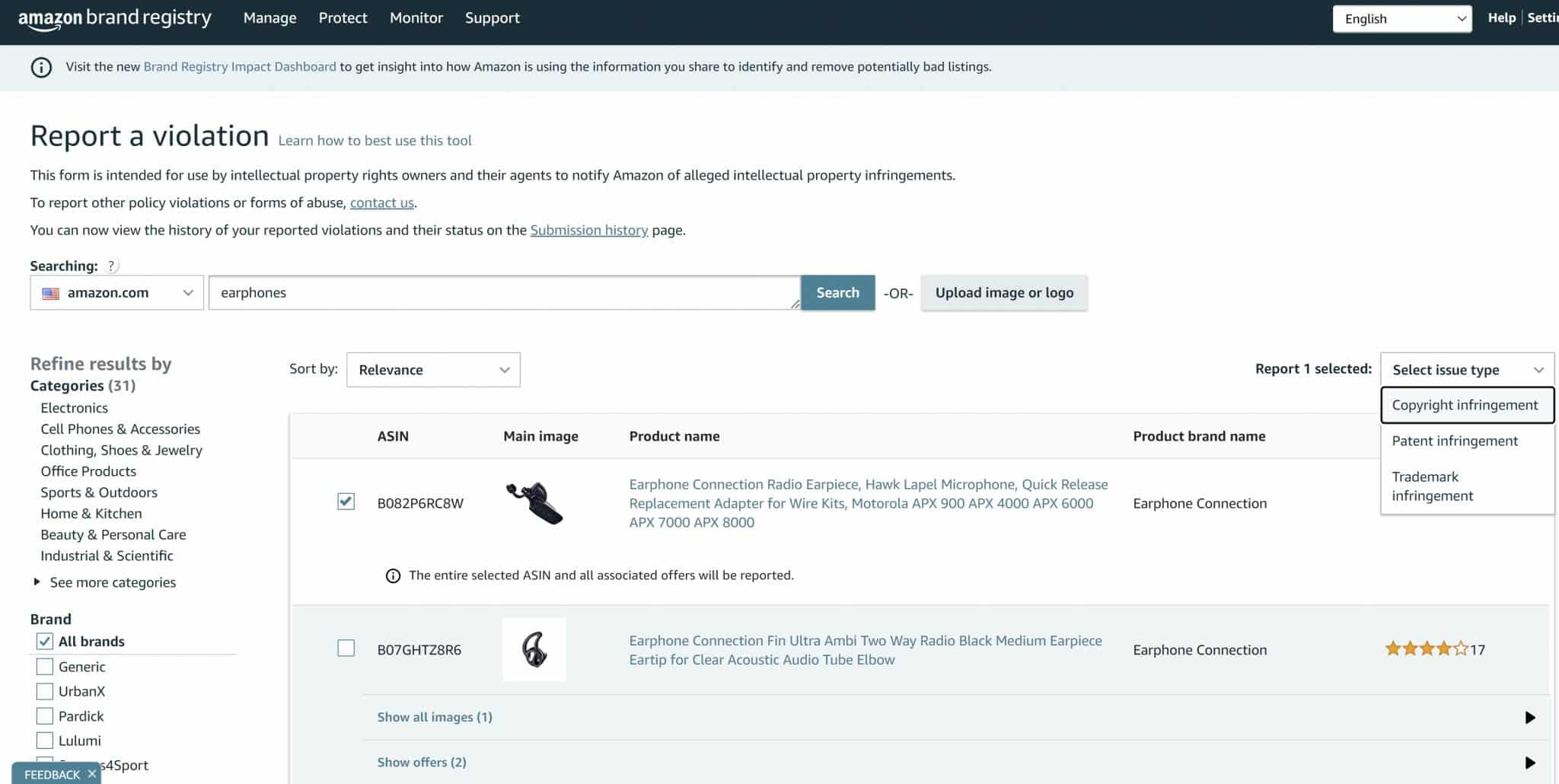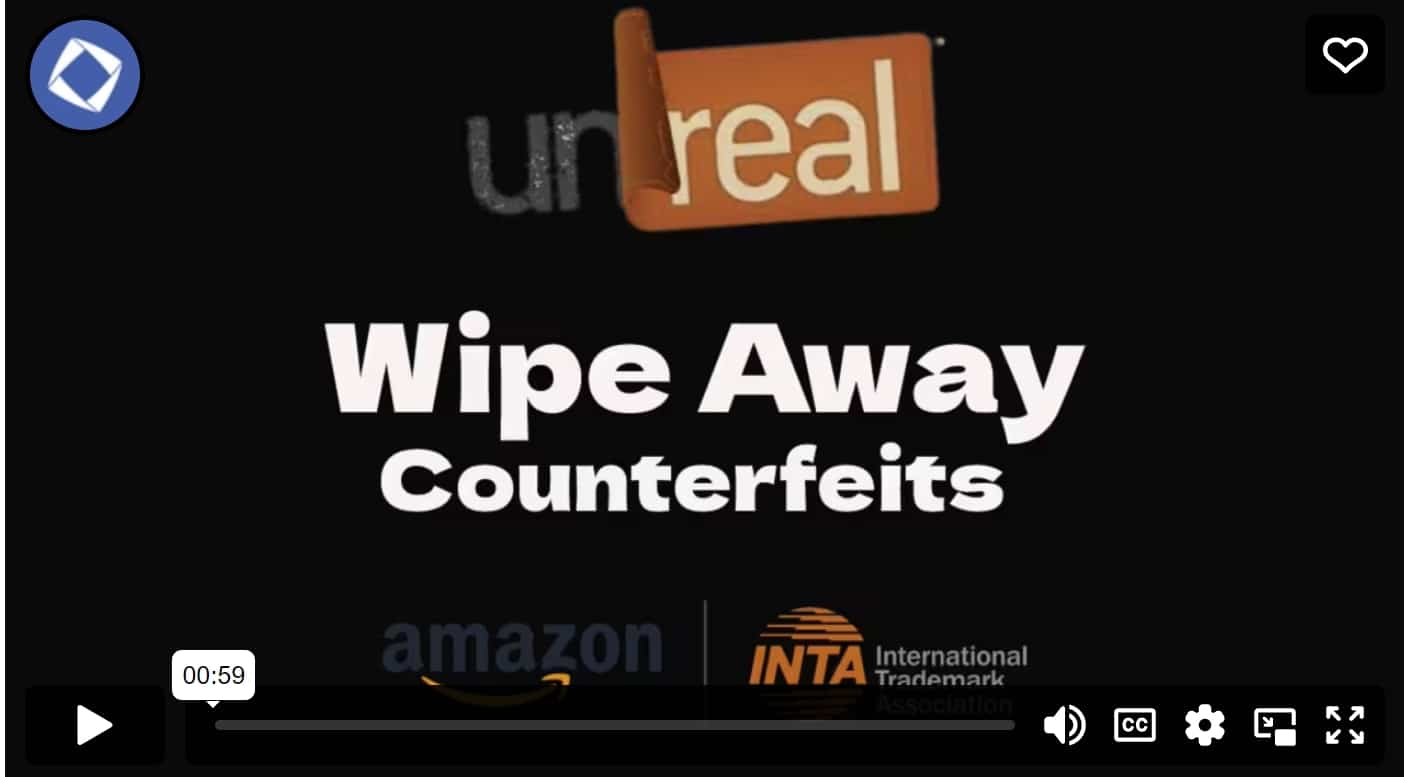Amazon Claims to Stop 800,000 “Bad Sellers” in Annual Brand Protection Report
Amazon Claims to Be Stopping Counterfeiters. Is it really?

Amazon just released its third Annual Brand Protection Report, where it claims to be protecting brands like yours by cutting down on the number of “bad actors,” reducing IP infringement claims, and stopping counterfeiters.
As is EcomCrew tradition whenever Amazon makes a major announcement or report, we'll break down what's real in this report and what's fluff.
Summary of What Amazon Claims to Have Done to Protect Brands in 2022
Amazon claims to have achieved many things in 2022 to protect brands. We'll break down how much of this is PR fluff and how much of it is real below, but here are the highlights of what Amazon claimed to have accomplished in 2022:
- The number of “valid notices of infringement” (more on what valid is) filed by brands in Brand Registry decreased by over 35%
- The number of bad actor attempts to create new Amazon selling accounts decreased from 6 million attempts in 2020 to 2.5 million attempts in 2021, to 800,000 in 2022.
- Amazon sued or referred for investigation over 1,300 criminals in the US, UK, EU, and China (and sometimes donated settlement amounts to community education programs).
- Amazon put some of the blame on law enforcement, saying “The reality, however, is that for too long, prosecution of counterfeiters has not received the level of resourcing and attention that is needed to stop counterfeiters.”
- Amazon seized and disposed of 6 million counterfeit items.
Is Amazon Really Stopping Counterfeiters and Protecting Your Brand?
Amazon made a lot of claims in its Annual Brand Protection Report. Let's break down some of what Amazon has claimed to have achieved.
Amazon Stopped 800,000 People from Opening Selling Accounts – Were They All Bad Actors and Counterfeiters?
Amazon claimed to have reduced the number of “bad actors” from opening seller accounts from 6 million in 2020 to 800,000 in 2022. A lot of this is likely simply a cyclical byproduct as ecommerce was booming in 2020 during the height of COVID and therefore the number of people trying to open accounts was significantly higher.
However, Amazon claimed to also be stopping bad actors by “rigorous identity checks.” Essentially, what Amazon has changed dramatically over the last year or so is requiring video verification (of both the person and their identity documents) with an Amazon employee to open a new seller account.
The new video verification is actually a big positive for cutting out “bad actors” (to use Amazon's terminology). I've personally seen on various seller discussion boards people complaining about the new video verification explicitly because it makes opening “burner accounts” more difficult.
However, Amazon is making the allusion that many of the people it stopped from opening selling accounts were counterfeiters. This is not very sincere at all from Amazon. As most sellers know, the vast majority of people trying to open illicit selling accounts are people either dodging a previous suspension from Amazon or trying to perform black hat tactics, not counterfeiters. Yes, some of these people may be selling counterfeit products, but it's almost certainly a very small minority.
The Number of “Valid” Brand Registry Infringement Notices Dropped by 35%
This was one of the more interesting nuggets in the report. Amazon claims to have reduced the number of “valid” infringement notices in Brand Registry by more than 35%.

Again, Amazon is not coating things with extra-rainbow icing here. Most of the time, when a seller opens an infringement notice in Brand Registry, it is not to report a counterfeit product but to report a copyright claim, often regarding photography. Reducing the number of copyright-infringing images is not quite as sexy to consumers as reducing counterfeit products.
So really, this stat should say “Amazon reduced the number of times sellers had to report copyright infringing images by 35%.” This isn't a bad thing for sellers, but it means Amazon is not being very sincere about the report.
Amazon Continues to Sue Sellers (and Often Donates the Money)
Amazon reported it sued or referred for criminal investigation over 1,300 sellers.
I have no way to verify this number, but it would appear to pass the smell test as, anecdotally, the number of sellers being sued by Amazon appears to have been increasing in the last one or two years.

Moreover, Amazon has sometimes donated the funds awarded from its Counterfeit Crimes Unit to various education initiatives such as this “Unreal Campaign” aimed at educating young people about the dangers of counterfeit products like fake earbuds and makeup.
Amazon Threw Some of the Blame on Law Enforcement
Most of the report talked about all of the great things Amazon was doing to stop counterfeiters, but it also said law enforcement shares the blame. In a fairly lengthy section, Amazon stated, “The reality, however, is that for too long, prosecution of counterfeiters has not received the level of resourcing and attention that is needed to stop counterfeiters.”
While no one would doubt that law enforcement agencies probably don't have enough resources to prosecute counterfeiters, it did feel a little odd for Amazon to essentially foot some of the blame on others in a report on what Amazon is doing to protect brands.
Is Amazon Doing Enough to Protect Sellers' Brands?
Amazon made a lot of claims in its Annual Brand Protection report. From this seller's perspective, Amazon has done a lot of positives over the last year to stop “bad actors” on Amazon. The big improvements have been the video identity verification when opening new accounts and their algorithms do legitimately appear to be cutting down on the number of copyright infringements for images.
However, at the same time, it is still incredibly easy for someone to rip off a seller's listing and products completely (especially for smaller brands) and most of the onus is still on sellers to catch this rather than Amazon. Moreover (and also one of the biggest frustrations for sellers) Amazon's algorithms often incorrectly remove sellers and products from Amazon for incorrectly suspected IP violations.
What are your thoughts? Has Amazon done enough to help protect brands selling on the platform? What would you advocate for Amazon to do differently to help protect brands?



